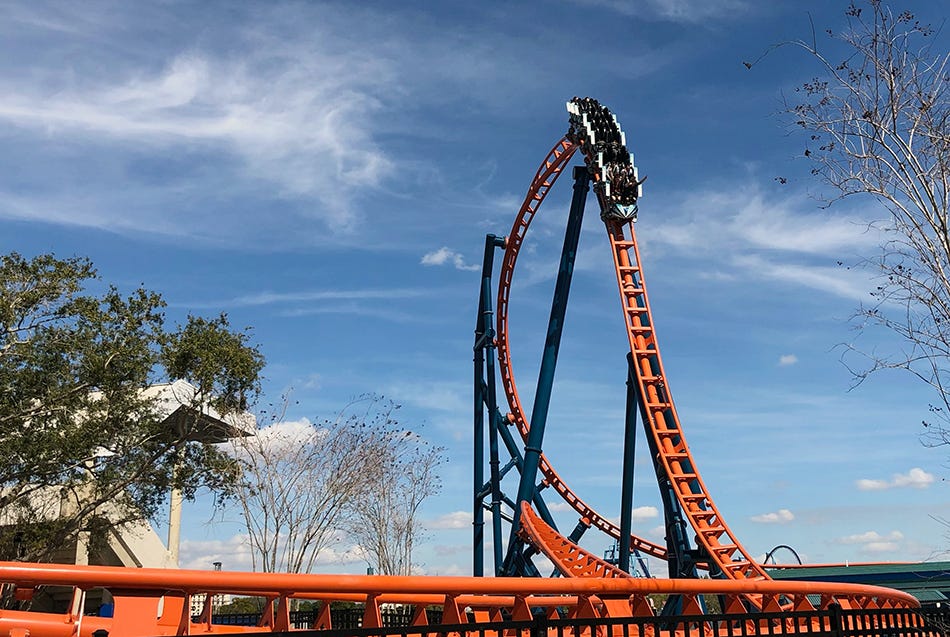Chilled thrills on SeaWorld’s Ice Breaker
Launched coaster delivers surprisingly cool ride
3.75 (out of 5)
It’s not the biggest or most extreme coaster at SeaWorld Orlando. (Those would include the floorless coaster, Kraken, the flying coaster, Manta, and the superb hypercoaster, Mako.) But Ice Breaker, which launched in late winter, punches above its weight and offers a fun, potent ride experience.
The fun begins right out of the station. Instead of rolling forward towards a conventional lift hill, a switch track moves the train laterally into position on top of a magnetic (LSM) motor. The switch track process is fast and seamless. Then, instead of launching forward, the train almost immediately blasts backwards from a standing start and partially rises up a dead-end spike.
Known as a multi-launch or multi-pass coaster, the two LSM motors embedded in Ice Breaker’s track rev up the action four times over the course of the ride’s first act. Rolling forward, the train passes through the motors, which accelerates it partway up a top hat tower (so named because the narrow, nearly vertical hill resembles the distinctive chapeau). Dropping backwards, the third launch cranks up the speed even more and sends the train to the top of the 93-foot spike. Boasting a beyond-vertical, 100-degree drop, the train plummets forward, hits the motors for one last burst of juice that gooses it to its maximum speed of 52 mph and catapults it up and over the 80-foot-tall top hat tower.
“With its height and speed, Ice Breaker may seem a bit unassuming,” says Brian Andrelczyk, senior leader of the design and engineering department at SeaWorld parks and resorts in Orlando. “But guests are telling us how surprising it is. Especially if you don’t know what’s coming.”
It’s kinda hard to know what’s coming when you are heading backwards. What is coming, however, are some nice pops of negative-G airtime. There are small camelback hills on both sides of the launch motors that send passengers out of their seats heading forwards and backwards. There is an even more sustained sensation of backwards-facing weightlessness when the train climbs the spike. Riders in the rear seat get to ascend the highest on the spike and experience the most intense airtime. Over the course of the ride, Ice Breaker delivers 13 airtime moments.
Cresting the top hat tower, Ice Breaker travels to the back of the park for its second act. There, the train meanders, encountering some banked turns, twists, and something the park calls a “sideways camelback” before heading back to the station.
By placing the ride’s station adjacent to the track and using the switch track to quickly move the trains into launch position, SeaWorld’s ride ops are able to efficiently load and unload its two trains and keep the line moving. Otherwise, Ice Breaker would be a one-train operation, and the train would race backwards and forwards through the loading station.
When the ride first opened, it had a 48-inch height requirement, which made it accessible to younger children ready to tackle a more aggressive–but not too intense–coaster. Soon after it debuted, however, SeaWorld raised the height requirement to 54 inches.
Have you tackled Ice Breaker? Are you hoping to give it a whirl? Leave a comment.
If you enjoy Arthur’s About Theme Parks, help spread the word.






